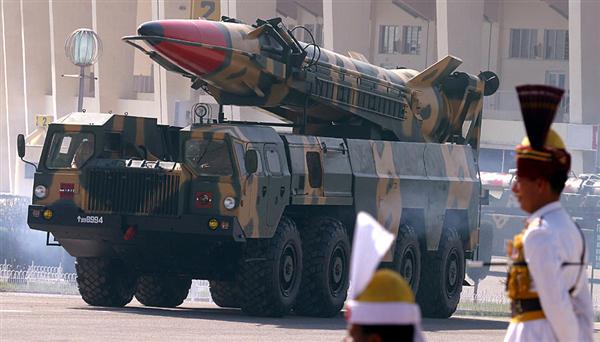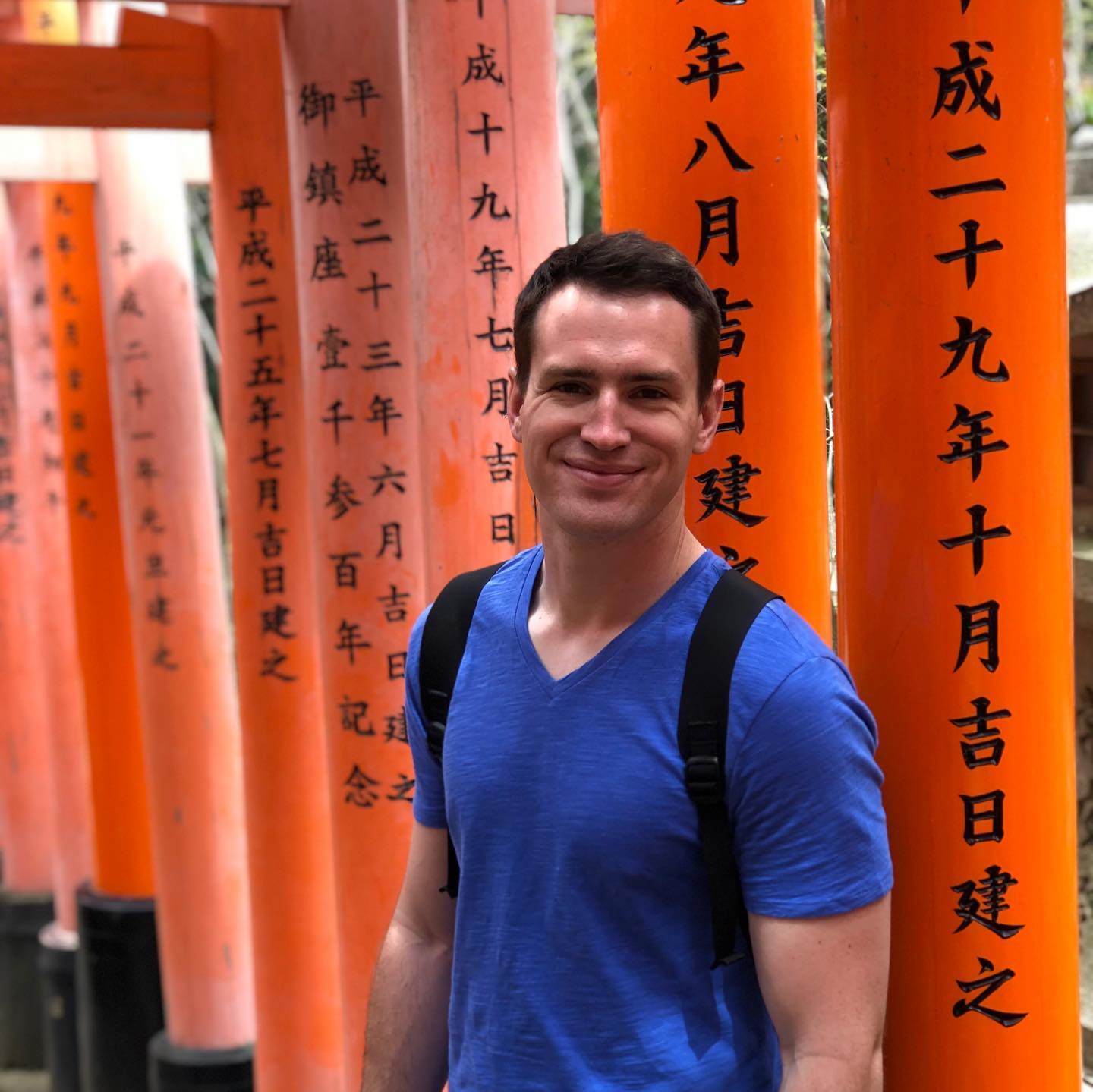Nuclear Posture: A nuclear noobs intro
 How do nations think about nuclear weapons?
How do nations think about nuclear weapons?
Nukes are back in the news again as Vladimir Putin has ordered his tactical nuclear forces into a higher state of readiness. This came about after slower than expected progress made by Russian forces during their invasion of Ukraine and an increase in western sanctions as well as lethal support for the Ukrainian armed forces.
Most people don’t think very much about nuclear arms until they explode onto our headlines, seemingly at random, once or twice a year. Usually this is in the form of a North Korean test, or a new round of talks about the Iranian nuclear program. Luckily there exists a committed group of academics and experts, outside of a military or political apparatus, who do think about nuclear arms on a regular basis who we can learn from.
I want to write a series of posts for lay people, by a lay person, to talk about some of the different facets of the field in slightly more complexity, and hopefully with more competency, than your local news broadcast.
A couple of ground rules:
-
Complexity isn’t to be shunned & ambiguity isn’t a failing. Hard problems often don’t present absolute answers, this holds for the subject of nuclear arms.
-
I will be pulling from the far deeper work of the academics and thinkers in this field, all sources will be cited.
-
I am open to being wrong in my interpretations. I don’t understand this subject as well as many other people.
-
I will try and use, as well as explain, the language used by experts in this field. Words have specific meanings in highly technical subjects. Sticking to those meanings and explaining them is better than reducing their precision by translating terminology into more common wording.
Cool, so where do we start?
What is Nuclear Posture:
I want to start here because it’s relevant to current events and frankly I need to start somewhere. What is nuclear posture? How can it be used to interpret current events? Let’s start by defining the term. For this post I am going to rely on Dr. Vipin Narang’s Optimization Theory of Nuclear Posture.
“Nuclear posture is the incorporation of some number and type of nuclear warheads and delivery vehicles, the state’s overall military structure, the rules and procedures governing how those weapons are deployed, when and under what conditions they might be used, against what targets, and who has the authority to make those decisions. Nuclear posture is best thought of as the operational, rather than the declaratory, nuclear doctrine of a country; while the two can overlap, it is the operational doctrine that generates deterrent power against an opponent.”
- Vipin Narang, Nuclear Strategy in the Modern Era
That’s a lot of jargon right out of the gate, let’s try and reduce this very technical definition to its core components.
Nuclear posture is the combination of:
- What a nation’s equipment allows its nuclear forces to do.
- How a nation’s policies and organizations allow for that equipment to be used.
Additionally Dr. Narang notes that a nuclear posture and what a nation or government says about how it will use its nuclear weapons (aka declaratory nuclear doctrine) can be different. For example, proclaiming to your coworkers that you are going to ride a bike to work is a declaratory doctrine. The fact that you neither own or know how to ride a bike would indicate that your operational doctrine is in fact going to be car based.
The difference between these two is important and the effects of this gap are observable. North Korea’s declaration that it will use its nuclear arsenal against targets in the US doesn’t provide the same deterrent power as the same threat from Russia. The difference here is that Russia has a nuclear posture capable of making good on that threat, they have missiles capable of reaching the US, warheads that can survive the trip, and a reliable system for ordering the launch. On the other side there are questions about the reliability of North Korea ICBMs, their ability to make a small enough nuke, and if their warhead would survive reentry. In Dr. Narang’s words:
“To put it bluntly, states care more about what an adversary can credibly do with its nuclear weapons than what it says about them.”
Nuclear posture provides us a way to understand the deterrent capability of a nation’s nuclear forces, and the components of a nuclear posture give us some insight into how a state thinks about its nuclear arms.
Types of nuclear posture:
| Catalytic | Assured Retaliation | Asymmetric Escalation | |
|---|---|---|---|
| Capabilities | Ability to assemble a small number of weapons. | Survivable second strike forces. | First use capabilities. |
| Management | Unknown/opaque | Assertive political control | Delegative (assets and authority and integrated into military forces) |
| Transparency | Ambiguous capability and deployment | Unambiguous capability,ambiguous deployment | Unambiguous capability and deployment |
| Employment | Leverage possibility of nuclear breakout to get 3rd party intervention. | Certain nuclear retaliation after a serious attack. | Nuclear first use against conventional forces. |
| Cost | $ | $$$ | $$ |
Table credit Vipin Narang, Nuclear Strategy in the Modern Era
Catalytic:
Catalytic states use the ambiguity of their nuclear capabilities and their position as a client state to a major power to get prompt intercession by said power on their behalf. Typically a catalytic nuclear force is shrouded in secrecy with the number, types and operability of their nuclear weapons left deliberately ambiguous. The goal of a catalytic posture is not to actually use nuclear weapons directly but rather to use the threat of nuclear escalation to bring a more powerful patron state into a conflict as a mediator, supporter or belligerent.
Catalytic postures require a patron state to function and thus isn’t operational for the higher rungs of the geopolitical ladder. Additionally catalytic postures are relatively cheap, you don’t actually need to build an arsenal or complex systems for managing one, all you need is a few nukes and a friend in a high place.

Bomb casings at South Africa’s abandoned nuclear bomb production facility near Pretoria, original source photojournalist Mungo Poore
Examples: Israel (pre-1990), South Africa
Assured Retaliation:
Assured retaliation envisions a survivable nuclear force that can credibly hit back after a nuclear first strike. This posture deters by demonstrating a near certain ability to deliver nuclear weapons into an adversary’s territory while at the same time concealing or fortifying it’s forces to a degree that an opponent cannot eliminate a retaliatory threat with a first strike.
States using this posture keep their arsenals under assertive political control. This centralized control minimizes the risk of an accidental launch by giving non military leadership the sole authority to fire nuclear weapons. Oftentime warheads and delivery systems are kept apart, launch codes or keys are likewise kept by separate agencies from those controlling the weapons themselves. The trade off of assertive control is speed, this is an acceptable tradeoff for a state planning on shooting second.
Assured retaliation is the most expensive posture listed here, it requires advanced technology and infrastructure such as long range missiles, ballistic missile submarines (SSBNs), hardened storage & launch facilities like underground silos, or movable missiles on gigantic transporter/launchers (TELs). Most importantly this system needs a reliable system for launching missiles by a central authority, this means planning, drills, hardened communication lines, means of authentication etc.. Any one of these items are a significant investment of both money and time, systems like long range missiles take decades to develop, and places assured retaliation out of reach for many nations.

Indian Arihant class balistic missile submarine, credit Zee News India
Examples: China, India
Asymmetric Escalation:
Asymmetric escalators threaten the use of nuclear weapons in response to any significant attack, conventional or otherwise. These states deter through the credible threat of immediate nuclear use should they come under attack.
Asymmetric escalators prize speed over security of nuclear forces and delegate launch authority and assets to military commanders. Nuclear weapons must be able to be launched quickly and with little warning so their usage is built into military doctrine and their systems integrated into military forces. The tradeoff of this speed is safety, accidental launch is a greater risk in delegatory systems as the decision making is “farmed out” to more individuals.
From a cost perspective asymmetric escalation is somewhat of a middle ground. Nuclear weapons need to be produced in quantity and systems for using them on the battlefield must be developed and deployed but these are much cheaper than the more advanced and hardened systems for a second strike force. Additionally there more complex apparatus for command and control seen in assured retaliatory states isn’t needed here.

A Pakistani TEL (Transporter Erector Launcher), credit defencetalk.com
Examples: France, Pakistan, North Korea
You’ll notice that several major nuclear powers are not listed as examples, particularly the US and Russia. Both the US and Russian arsenals are so vast they essentially pursue both asymmetric escalation and assured retaliation simultaneously, however both maintain strong political control over their arsenal. If you are interested in why a state might select a specific posture and a deeper understanding of the Optimization Theory of Nuclear Posture please read Dr. Narangs book on the subject Nuclear Strategy in the Modern Era from which most of this information was gleaned.
How can we apply this today?
Nuclear Posture can be a lens through which we interpret a state’s actions and declarations surrounding its nuclear force. An example of this are the various interpretations of recent developments in China. In July 2021 new satellite imagery taken by Planet and analyzed by arms control experts from the James Martin Center for Nonproliferation Studies at the Middlebury Institute of International Studies at Monterey (CNS/MIIS) revealed 120 silos under construction by China’s PLA Rocket Force (Article).

120 silos under construction in Yumen, China. Credit Planet & James Martin Center for Nonproliferation Studies
This represents a significant increase in the number of ICBM silos operated by China. On the surface building 100+ missile silos would seem to indicate an intent to threaten the would-be adversaries with a vast nuclear arsenal. Some pundits, lawmakers and observers were shocked by what they saw as a drastic and threatening move by China signaling a new more aggressive nuclear strategy to the west.
“Nicholas Burns, the Biden administration’s nominee to be US Ambassador to China, said during his confirmation hearing last month that the Chinese “are blasting past that definition (of a minimum nuclear deterrent), and they’re rapidly engaged in the buildup of their nuclear arsenal, including the disturbing reports of the hypersonic technology.”
- CNN A change in China’s approach?
However when looking at this development through the lens of Chinese nuclear posture we can come to a different conclusion as to why these silos might be built.
Chinese declared nuclear posture is that of assured retaliation:
“The most recent Defense White Paper, alongside some Chinese texts, makes clear that China plans on using alert levels to signal resolve. ‘If China comes under a nuclear threat’ the 2013 paper states, ‘nuclear missile force will act upon the orders of the [Central Military Commission], go into higher level of readiness, and get ready for a nuclear counterattack to deter the enemy from using nuclear weapons against China.’ “
- Paper Tigers: China’s Nuclear Posture by Jeffery Lewis
Navigating our grid above we can see that this means that China has:
- Assertive political control of launch authority
- Survivable nuclear forces
- Unambiguous capabilities with ambiguous deployment strategies
Silos are certainly not ambiguous deployments at first glance but the layout of the field, particularly the spacing (approx 3km) between silos, indicates that this may be a shell game approach to missile basing. Not every silo needs a missile, but every silo would have to be destroyed in order to assure China couldn’t strike back at an adversary. This aligns with current Chinese nuclear posture as these new silos would be an unambiguous capability with an ambiguous deployment strategy. I subscribe to this view especially given China’s relatively small arsenal of nuclear warheads which number around 350 in total (Source).
While building more ICBM silos certainly isn’t a good thing by applying what we know about nuclear posture we can make a good argument that this is in fact not a drastic change from what China has been doing for decades and probably not cause for great alarm.
For further reading on the history and thinking behind Chinese nuclear forces I highly recommend Paper Tigers: China’s Nuclear Posture by Dr. Jeffery Lewis.
Hopefully this was relatively understandable, I’ll return to the subject of nuclear weapons in the near future. If you want to talk with other amateur (and some professional) arms control nerds come join an awesome OSINT community at the Arms Control Wonk slack channel. If you are interested in this stuff and want to hear from the actual experts I can highly recommend the following podcasts:
- The Arms Control Wonk Podcast
- The Diplomat: Asian Geopolitcs Podcast
- The Chain Reaction Podcast from FPRI
- At The Brink Podcast from the William J Perry Project
Books Mentioned in this post:

